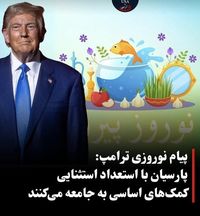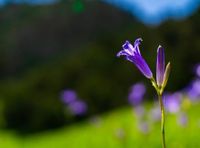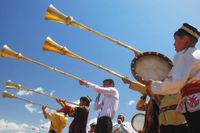Nowruz, also known as the Persian New Year, is a celebration that marks the arrival of spring and has been celebrated for over 3,000 years across various regions of the world, including parts of the Middle East, Central Asia, South Asia, and beyond. This year, Nowruz corresponds to the year 1404 in the Iranian calendar, and as families prepare for the celebrations, messages of hope and renewal are shared.
As the last day of the Persian month of Esfand comes to a close, this year’s Nowruz is set to begin on March 20, 2025, at 12:31 PM local time. It’s a moment that encourages people to reach out to family and friends, exchanging heartfelt wishes for the new year. From sharing greetings to sending gifts, the custom is enriched by messages filled with good wishes and warm sentiments.
Former U.S. President Donald Trump also extended his wishes to those celebrating the occasion, stating, “From the United States, we offer our best wishes for this festive occasion. Happy Nowruz!” He emphasized that Nowruz is “a joyous occasion for the people of Iran to mark the arrival of spring and the new solar year,” as it presents an opportunity for reflection on the blessings of the past year and readiness for a fresh start.
The roots of Nowruz are profoundly ingrained in Iranian culture and history, symbolizing rebirth and new beginnings as people bid farewell to winter’s chill. It’s a time for families to clean their homes, gather around the Haft-Seen table, and share traditional foods. The Haft-Seen table, beautifully decorated with seven symbolic items whose names start with the Persian letter ‘S’, exemplifies the richness of the celebration.
The preparations for Nowruz include various traditions unique to different regions. In Azerbaijan, for example, bonfires are lit on the eve of the new year, and families jump over the flames to cleanse themselves of misfortunes from the past year. This purifying ritual showcases the joy and communal spirit that characterizes the festive atmosphere.
Nowruz encompasses various customs in countries like Afghanistan, where the celebration includes a dish called seven fruits, a sweet dessert comprising seven types of dried fruits, the excitement of gathering with families, sharing poetry, and enjoying traditional foods such as fish and rice.
Historically, Nowruz serves as a reminder of the commonality of human experiences across cultures. For centuries, it has transcended borders, connecting people through themes of renewal and hope. In the Balkans, Middle East, and parts of Africa, Nowruz serves as a unifying force that celebrates diversity while fostering a spirit of unity.
Countries such as Tajikistan and Uzbekistan honor Nowruz as a public holiday with spectacular communal celebrations filled with dancing, singing, and competitions, reflecting local culture while retaining the essence of the festival. In Tajikistan, homes are immaculate before the new year, and the arrival of Nowruz is celebrated with feasts featuring seven symbolic dishes during family gatherings.
Nowruz not only signifies the timing of spring but also embodies a blend of different cultural practices. Although it has ancient roots, the festival has evolved over time, integrating nuances from the regions it touches. Its recognition as a UNESCO Intangible Cultural Heritage of Humanity highlights its significance beyond just a solitary tradition.
The festivities bring families together, often beginning with cleaning their homes in a gesture to purify their spaces and lives in preparation for the new year. The festive meals that follow incorporate a variety of dishes—from rice dishes to sweets, highlighting regional variations yet culminating in joyful communal meals.
Nowruz continues to provide an opportunity for storytelling, imparting wisdom, and preserving cultural heritage among generations. As families make memories together, they celebrate the shared beliefs that transcend ethnic and cultural divides, reinforcing bonds of togetherness and solidarity.
As Iran approaches the dawn of 1404 and with it, the promise of renewal, traditions intertwined with respect and care keep the spirit of Nowruz vibrant. It serves as a gentle reminder that with every spring comes new beginnings, opportunities for growth, and a reflective pause for the blessings received. Whether near or far, the festival invites everyone to celebrate the essence of life’s renewing spirit.






